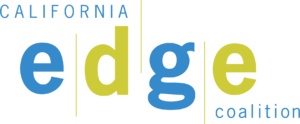
Federal Appropriations & Shutdown
During the Summer, federal activity around appropriations and implementation guidance accelerated, but momentum has since slowed amid the ongoing federal government shutdown. The shutdown, now stretching into its third week, has stalled key agency operations, delayed new funding guidance, and created uncertainty around timelines for FY26 appropriations and federal grant implementation.
Implications in California
For workforce advocates in California, this moment underscores the importance of staying connected to both national policy shifts and on-the-ground realities. This is a time to continue to monitor federal developments closely and coordinate with partners to ensure the state’s priorities for equitable workforce investments remain visible in national conversations.
In response to anticipated disruptions to federal food-assistance benefits and CalFresh as a result of the federal government shutdown, Governor Gavin Newsom has deployed the California National Guard and state volunteer teams to support food banks across California this November. Governor Newsom is also fast-tracking an $80 million infusion to food-banks in nearly every county.
Take Action
- Congress may be at a standstill, but America’s workers can’t wait. Join National Skills Coalition in calling on Congress to fully fund workforce and education programs that help workers train for in-demand jobs and help businesses find the skilled talent they need. Sign on here.
- Join the NSC Network Call on November 4th. Register here.
New Federal Work Requirements for CalFresh (SNAP)
States are racing to implement new federal work requirements for the Supplemental Nutrition Assistance Program (SNAP) or CalFresh, as it is known in California. These changes (part of the “Big Beautiful Bill”, passed earlier this year) expand who is subject to time limits and narrow who qualifies for exemptions.
NSC recently published a blog outlining the new federal guidance issued by the U.S. Department of Agriculture’s Food and Nutrition Service (FNS). In California, the biggest takeaways are:
- States are required to implement the new criteria immediately, with a short period of time to come into compliance with the new rules before they’re fully enforced on November 1, 2025.
- Over 359,000 adults in California would be subject to time limits and at risk of losing their CalFresh benefits. While the federal government frames these shifts as a way to encourage employment, research and experience has shown that work requirements do little to help workers get ahead and instead punish them for systemic barriers outside their control.
- SNAP case managers will face more paperwork, stricter oversight, and pressure to implement quickly. Older adults, parents of teens, and previously exempt groups are at risk of losing food assistance.
The federal guidance leaves little flexibility, but states still have important choices to make. California policymakers and advocates should:
- Track implementation closely to identify impacts to people and administrative burdens, taking corrective action where possible;
- Use waiver authority strategically where possible, particularly in areas with high unemployment or limited job access;
- Integrate CalFresh Employment and Training with state workforce plans to prioritize training and supportive services; and
- Collect and share data on how these changes affect workers, families, and state budgets.
Workforce Pell
In July, Congress passed Workforce Pell into law, which expands Pell eligibility to high-quality, short-term programs (8–15 weeks) that meet outcome standards (completion, earnings, cost). For the first time, learners can use Pell Grants to afford accelerated, career-focused programs connected to good jobs. While the new law is a big win, there are lots of details that need to be worked out to implement its requirements by July 1, 2026, when it is set to go into effect.
Advocates and leaders in California shouldn’t wait until July 1, 2026, to prepare for Workforce Pell implementation, even as the Accountability in Higher Education and Access through Demand-driven Workforce Pell (AHEAD) Committee and Department of Education work on federal rules. NSC has put together a resource that outlines Workforce Pell implementation and next steps. Specifically for state advocates and leaders, NSC recommends the following:
- Learn from other states. Together, 32 states have invested over $5.6 billion of their own funds in short-term credential programs. States that have existing state-funded financial aid programs that support students pursuing short-term education and training programs have a leg up in preparing for the launch of Workforce Pell and can offer practical lessons for other states.
- Set the table to identify eligible programs: Governors, state workforce boards, and higher education agencies play a critical role in determining which training programs should qualify for Workforce Pell in accordance with the law. These leaders should come together to build relationships, share resources for identifying target industry sectors/occupations, and utilize existing systems for assessing which training programs and credentials meet quality criteria.
- Establish data sharing policies and agreements. Data will be key to assessing which training programs are eligible for Workforce Pell. Just as importantly, learners and employers need robust data on programs to measure and assess their quality. States can chart a course to high-quality Workforce Pell programs by building their data ecosystems now.
- Secure state resources to invest in complementary workforce policies. Instead of simply supplanting state investments in short-term credential programs with Workforce Pell, states should use their own resources to invest in complementary workforce policies like industry partnerships, work-based learning, career navigation, supportive services, and data systems. Such state investments will be particularly essential at a time when learners will have less access to other resources, like federal safety net and workforce programs.
As states navigate and prepare for Workforce Pell implementation, on the federal level, NSC continues to advocate for workforce policies that would complement and strengthen Workforce Pell, including the College Transparency Act (CTA), and a bipartisan suite of workforce bills.
